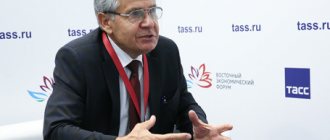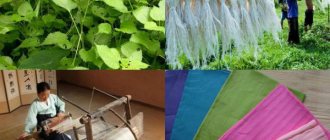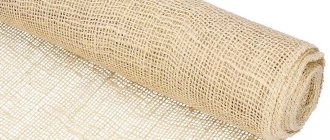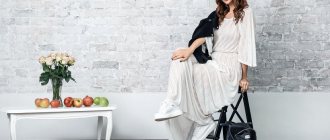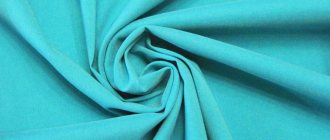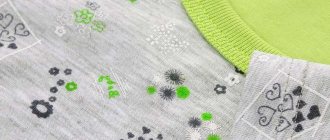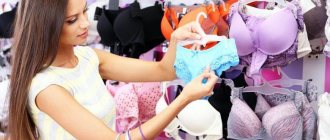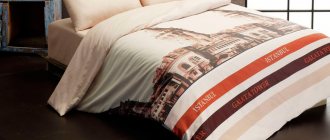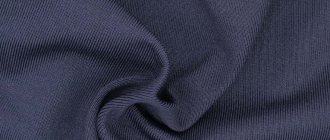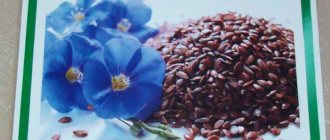Historical facts
According to some archaeologists, hemp began to be used more than 4 thousand years ago. Even in ancient times, this plant was a raw material for the manufacture of clothing, bed linen, sailing sheets, curtains and many other textile products. It was also widely used for the manufacture of ropes, ropes and cables. In Russia, hemp began to be cultivated under Peter I, and the fibers extracted from the plant were called hemp or hemp. It was also used as caulking for wooden houses.
There are two types of the plant: Cannabis Sativa, which is legal for cultivation and used for industrial production, and Cannabis Indica, which contains higher amounts of tetrahydrocannabinol (a psychoactive drug), its fibers are of lower quality and are used in the production of drugs and some types of medicines.
At the beginning of the twentieth century, the famous company LEVI'S produced its first jeans made from hemp fabric and tried to establish their mass production. But the process was very labor-intensive, and then the war on drugs began to interfere with this. Nowadays, when they began to cultivate hemp that does not contain narcotic substances, and the technological process became easier, this type of fabric began to rapidly gain popularity.
Cannabis is a dioecious plant, meaning there are male and female plants. Bushes with male flowers are called “poskonyu”, and those with female flowers are called “materka”. Male ones ripen faster, so they used to be collected by hand, even before they hardened, and the mother was left to ripen to obtain seeds. Thin fabrics for clothing were made from the raw material, and ropes and ropes were made from the mother cloth.
Hemp plant
High quality forms of cultured fiber have properties that maximize fiber production. Because nodes tend to disrupt the length of fiber bundles, thereby limiting quality, tall, relatively unbranched plants with long internodes are selected.
Read about: natural protein fibers: silk threads of cocoons.
Another strategy has been to select stems that are hollow at the internodes, with limited wood, as this maximizes fiber production relative to supporting woody tissues. Likewise, limited seed production concentrates the plant's energy into fiber production, and fiber varieties often have a low genetic propensity to produce seed. Selecting uniform strains overcomes the problem of differential ripening time and quality of male (hardy) and female (pistillate) plants (males ripen 1-3 weeks earlier).
Male plants are generally taller, although thinner, less robust and less productive. In earlier labor-intensive times, male plants were harvested before female plants to produce superior fibers. The limited branching of fiber varieties is often compensated for by the presence of large leaves with broad leaflets, which apparently increases the photosynthetic capacity of the plants.
Typical architecture of cultivated hemp
- Plants grown for oilseeds have traditionally spread well and developed medium height and strong branching. Fiber varieties are grown in high density, unbranched and very tall.
- "Dual-purpose" plants are grown at moderate densities, tend to be lightly branched and have medium to tall heights. Some recent oilseed crops are grown at moderate densities and are short and relatively unbranched. The degree of branching and height are determined both by the density of the plants and their genetic background.
Production Features
Read about: velvet: incomprehensible, great and perfect.
The fabric is produced from the stems of the plant, which consist of pulp and fibers. The bushes are planted in the fields very close to each other, when the leaves fall, the remaining stems are mowed down and left to lie on the ground in rain and sun, sometimes turning over so that the sun hits each side. The fibers become soft, and all minerals return to the ground along with rainwater. This process is called biological lobe or spread. The stems are then collected by a special machine that separates the fiber from the pulp. Previously, this was done manually. The resulting fiber is bleached and dried.
On a note
The production of hemp fibers does not use a large number of chemicals, unlike the production of synthetics and cotton.
Hemp fabric and its properties
Hemp products are practical and easy to use, as they have many positive qualities:
- strength and wear resistance. Hemp fibers are the strongest among plant fibers, they are several times stronger than cotton and wool. Clothes made from such fabric can withstand repeated washing and will last for many years;
- hygroscopicity. The fibers are porous, due to which the fabric is able to absorb large amounts of water. This ensures good “breathing” of the skin and optimal thermal balance. Hemp clothes are warm in winter and cool in summer;
- hypoallergenic. When growing a plant, there is no need to use fertilizers or chemicals to control pests, so clothing made from such fibers is environmentally friendly and non-toxic, suitable for people with sensitive skin. In addition, it does not attract dust particles;
- do not accumulate static electricity, unlike synthetics, wool and cotton;
- softness. Hemp is softer and warmer than cotton, its fibers are longer and stronger;
- lightness and color fastness. Dyes better than cotton and other types of fabrics;
- resistance to deformation. The fibers do not shrink at water temperatures up to 300 degrees.
What standards apply during manufacturing?
In Russia there are no specific standards for clothing and linen fabrics made from hemp seeds. The compliance of the parameters with the requirements of the clothing and other industries is assessed in accordance with similar standards for other fabrics.
The parameters of natural and mixed fabrics intended for sewing linen and clothing are defined in GOST 29298-2005, including:
- Hygroscopicity – not less than 100 cubic dm/sq. m*s.
- Free formaldehyde content (µg/g) – no more than 300 for clothing fabrics, no more than 75 for bedding materials and any items for children over 1 year old, no more than 20 for children under 1 year old.
Benefits for the body
Textiles made from hemp are protected from the effects of fungi and pathogens. They are not afraid of mold and bacteria, they completely destroy the smell of sweat.
Read about: lightness and airiness in beautiful chiffon fabric.
The fabric refreshes and tones the body, and also has a restorative, calming and analgesic effect. It is recommended for the treatment of erysipelas, diathesis, mastitis, and bruises.
Clothing made from hemp almost completely (95%) blocks the harmful effects of ultraviolet rays, thereby preventing premature aging of the skin.
Application
hemp jeans
The fabric, which retained all the beneficial properties of the plant during production, began to be used again for the manufacture of clothing, accessories, interior items, and is even used to decorate indoor walls.
Hemp clothing and accessories
Hemp fibers are used to produce various items of women's and men's clothing: shirts, T-shirts, dresses, sweaters, socks. Thanks to modern technologies, the fabric can be very rough and textured (like burlap), or, on the contrary, thin and smooth like silk. Due to its positive effect on the body as a whole and its hypoallergenic nature, this fabric is often used in the production of clothing for newborns.
Due to the lack of a "greenhouse effect" in clothes made from hemp fabric, it is pleasant and useful to exercise. Knitted items made from hemp yarn are very light, do not shrink, do not stretch or fall off even when machine washed. The yarn can be made from 100% hemp fibers or with the addition of cotton, linen and cashmere.
Backpacks and bags made of hemp fabric are durable, wear-resistant and look very stylish.
Home textiles
In eco-style interiors, curtains made of hemp fabric are used, and decorative pillows, tablecloths, bedspreads, and canopies are also sewn from it. They repel dust, do not fade, do not deform and last a very long time.
It is very comfortable to sleep on bed linen made from such fabric; it absorbs moisture without sticking to the body. Hemp fabric is capable of emitting electric waves corresponding to the electronic waves of human skin.
Views up close
Different types of fabric differ primarily in density; there are thin and coarser fabrics. According to the area of application, the following types of edges are distinguished:
- A thin fabric with a smooth texture, similar to cotton, but more durable. Used for sewing linen and summer clothes.
- Textured fabric with protruding weaves, imitation of hand-made production - for needlework, finishing clothes, bags.
- A material of medium density and texture, with characteristics close to tweed - for sewing dresses, skirts, trousers, jackets, light coats and jackets.
- Thick fabric (up to 300 g/sq. m) – for bags, backpacks, elements of shoes, demi-season clothing.
Product care
- It is better to wash hemp products on a delicate cycle at medium temperatures.
- Since the threads are made of porous fibers, during washing they absorb detergent along with water. If the powder does not dissolve well, its particles can damage the structure of the fibers. Therefore, it is advisable to thoroughly dissolve it or use only liquid detergents.
- Items should be rinsed thoroughly to ensure that no traces of detergent remain in the fibers.
- It is better to dry such things outdoors.
- It is better to iron them slightly damp, from the wrong side. Use the “linen” mode.
Useful
The more often you wash hemp products, the softer they will become. Before using bed linen, it must be washed and dried in the washing machine several times to make it more delicate.
In many characteristics, hemp fabric is several times superior to other natural ones. Products made from it are environmentally friendly, hypoallergenic, look stylish and fashionable. With proper care they will last a very long time.
© 2021 textiletrend.ru
For what purposes can it be used?
Poskon has regained its former glory thanks to designer clothes and interior decorations in a distinctly eco-friendly and ethnic style.
Now the fabric is used in the same way as other natural materials; it is used to make:
Bed linen, underwear and table linen.
Men's, women's, children's clothing (summer and mid-season) and hosiery.
Overalls, uniform.
Production of elements of sports and casual shoes.
Handicrafts – making panels, napkins and other home decorations.
